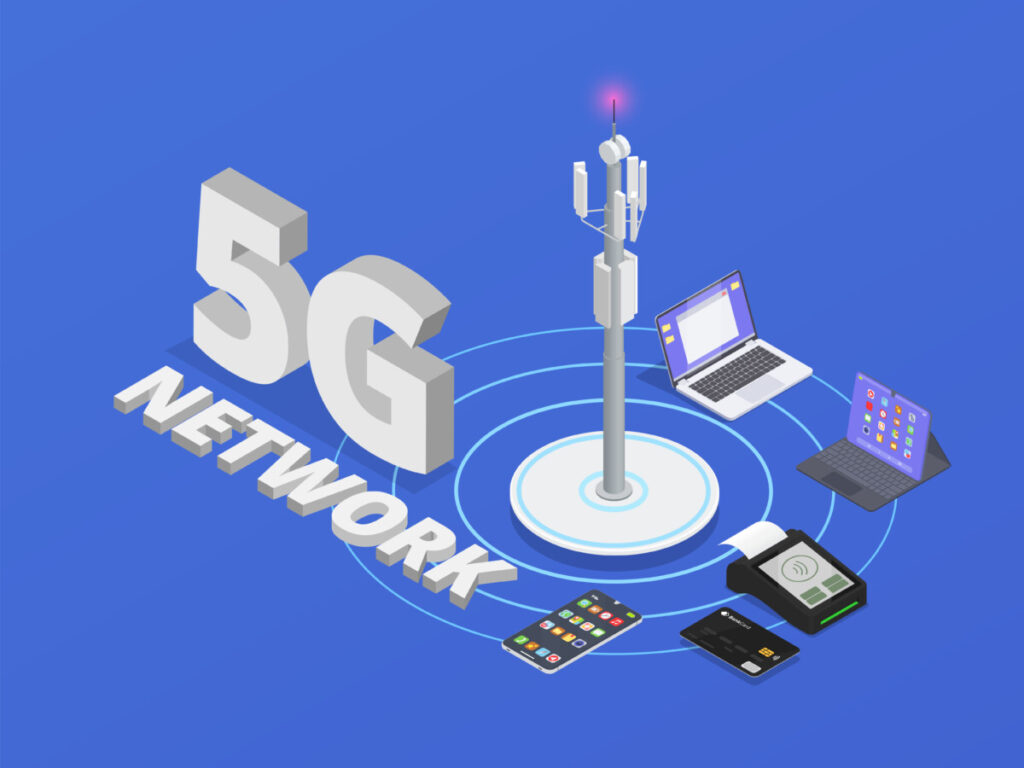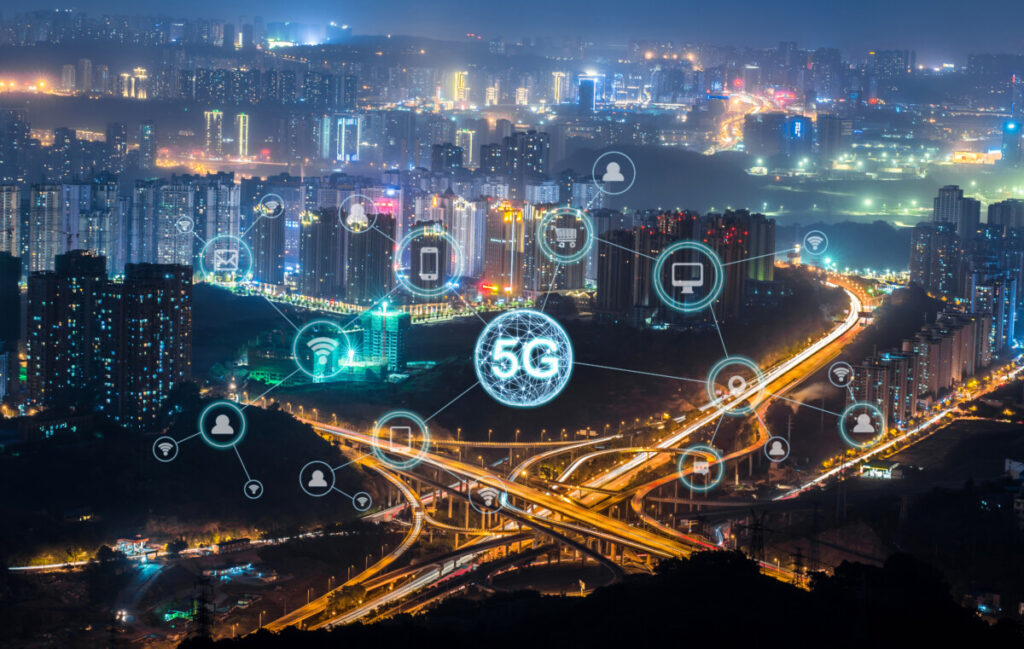What 5G Technology Is?
5G technology is the fifth generation of wireless communication. It’s like a supercharged version that makes our phones and devices work even better. In simple terms, it brings faster internet with more reliable connections.
Behind the scenes, 5G uses remarkable technologies to make this happen. These include many antennas (Massive MIMO), clever software (like Software-Defined Networking), and high-frequency waves. All of this helps give us quicker downloads and better connections and opens the door to exciting things like smart cities and super-fast healthcare.
What Sets 5g Apart? Why Is 5g Important?
Designed to revolutionize our daily lives, 5G promises faster download speeds, low latency, and expanded capacity, particularly tailored for applications like virtual reality (VR), the Internet of Things (IoT), and artificial intelligence (AI).
With download speeds exceeding 1 gigabit per second and latency as low as 1 millisecond, 5G enhances our ability to access and stream data seamlessly. Its reported capacity to support up to 1 million connected devices per square kilometer underscores its potential impact on our increasingly interconnected world.
As 5G continues its global rollout, it stands as a transformative force, redefining how we connect and engage with the digital landscape.
5G: Transforming Industries

Healthcare
5G ensures quick and reliable data transfer for real-time patient monitoring, telemedicine, and efficient medical data sharing among professionals.
Education
Entertainment
5G enhances the entertainment industry with improved streaming, augmented reality experiences, and interactive gaming, providing a more immersive user experience.
Smart Cities
5G is crucial for smart city development, facilitating efficient communication among IoT devices for better traffic and waste management and overall improved citizen connectivity.
Technology Advancements
Continuous 5G advancements bring faster network speeds, lower latency, and increased capacity, ensuring a more responsive experience across various applications and industries.
Benefits of 5G Technology Advancement:
- Faster internet speeds for seamless streaming and downloads
- Lower latency for quicker response in online activities
- Enhanced mobile gaming experiences with reduced lag
- Improved video calls and conferencing quality
- Increased connectivity for smart devices and IoT integration
- Quick access to large files and documents
Applications of 5G Advanced Technology:

Enhanced Mobile Broadband (eMBB): Faster data speeds for improved mobile internet, video streaming, and download/upload experiences.
Internet of Things (IoT): 5G enables efficient connectivity and communication among many IoT devices, fostering smart homes, cities, and industries.
Augmented and Virtual Reality (AR/VR): Immersive experiences with reduced latency, making applications like virtual meetings, gaming, and simulations more realistic.
Telemedicine: Real-time communication among healthcare professionals for remote patient monitoring, consultations, and quick transmission of medical data.
Autonomous Vehicles: Low latency and high data speeds support communication between vehicles and infrastructure, which is crucial for developing autonomous transportation.
Smart Cities: Improved connectivity for efficient traffic management, waste management, and enhanced urban living through IoT applications.
Industrial Automation: Low-latency communication enhances industry automation, supporting robotics, remote monitoring, and control systems.
Critical Infrastructure Management: 5G facilitates reliable and secure communication for the monitoring and managing critical infrastructure, such as energy grids and water supply systems.
Education: Enhanced connectivity for remote learning, virtual classrooms, and quick access to educational resources.
Entertainment: Improved streaming quality, interactive gaming, and augmented reality experiences for a more engaging entertainment landscape.
[table id=2 /]
Global Landscape of 5G Adoption: Trends and Challenges Across Countries:

5G adoption varies globally, with leaders such as South Korea, China, and the United States spearheading extensive network deployments. European nations like the UK and Germany are actively implementing 5G, prioritizing urban areas and key industries. In the Asia-Pacific region, Japan and Australia are making notable progress, recognizing 5G’s potential for economic development.
Meanwhile, India is in the early stages of 5G implementation. Despite these advancements, challenges persist in some countries, including regulatory hurdles, security concerns, and infrastructure limitations, impacting the speed of the 5G rollout. Recognizing the need for a cohesive global 5G ecosystem, international collaboration and standardization efforts are underway to ensure seamless interoperability across borders.
To Sum Up,
In summary, 5G is revolutionizing global connectivity and innovation. Its adoption signifies a shift towards high-speed data as the new standard, reshaping industries and advancing healthcare. With continuous advancements, 5G’s pivotal role in our interconnected future is undeniable. The widespread global adoption marks a technological leap and a paradigm shift towards a more connected world.




